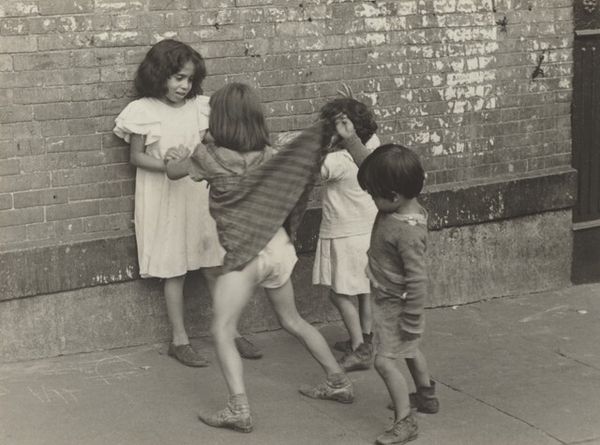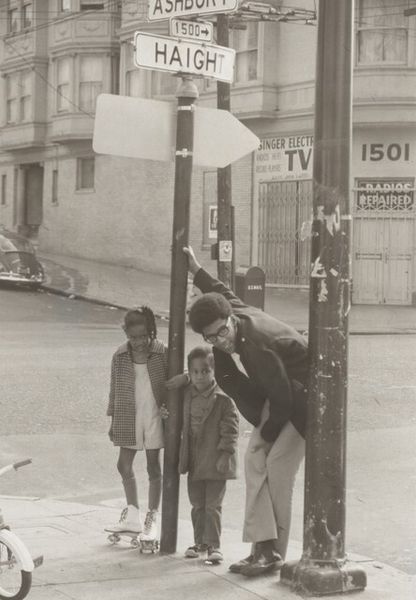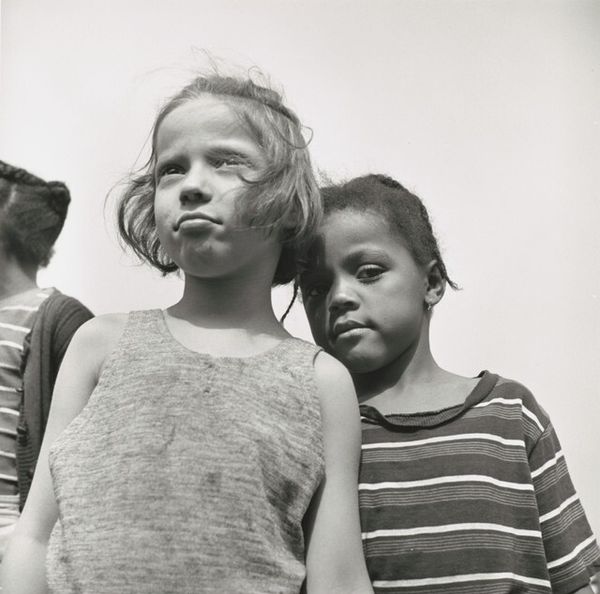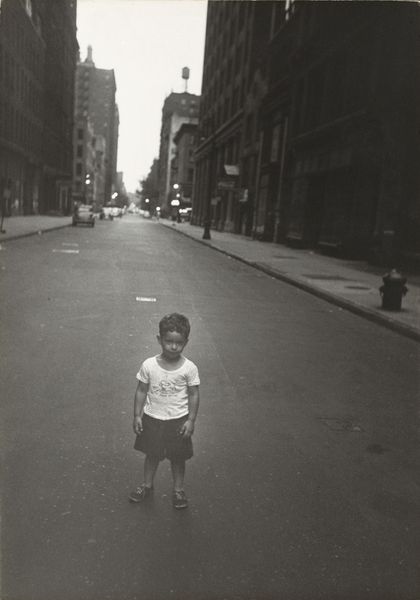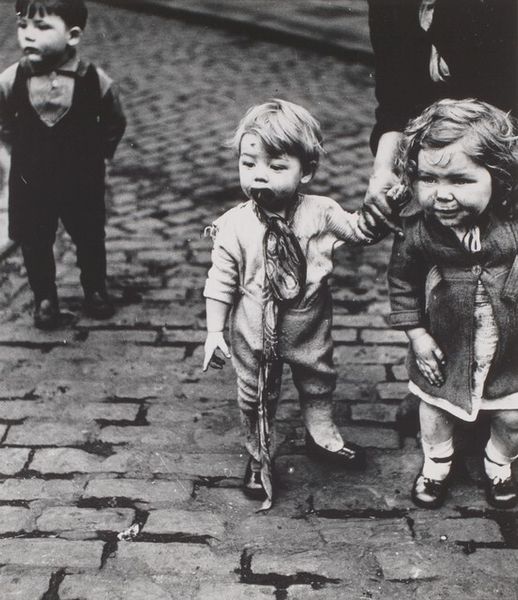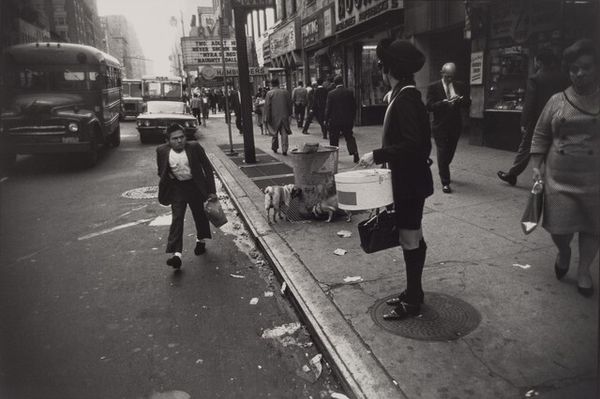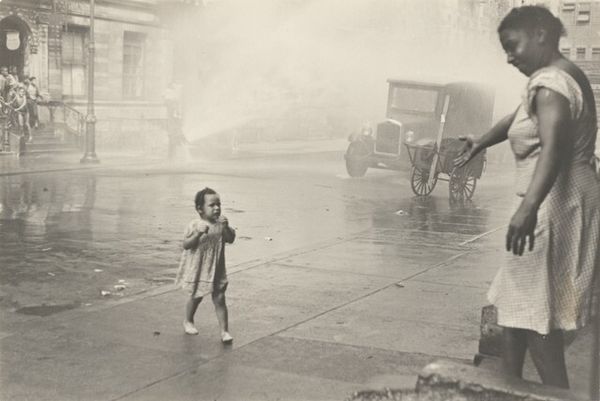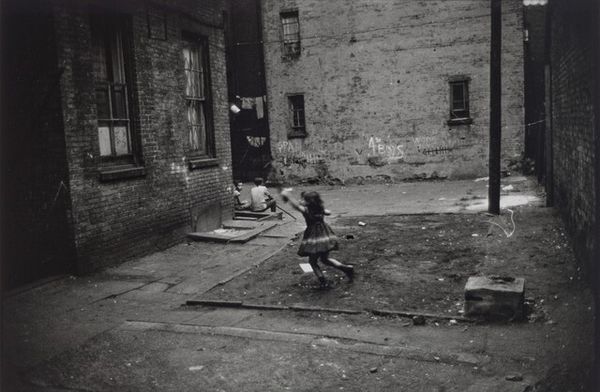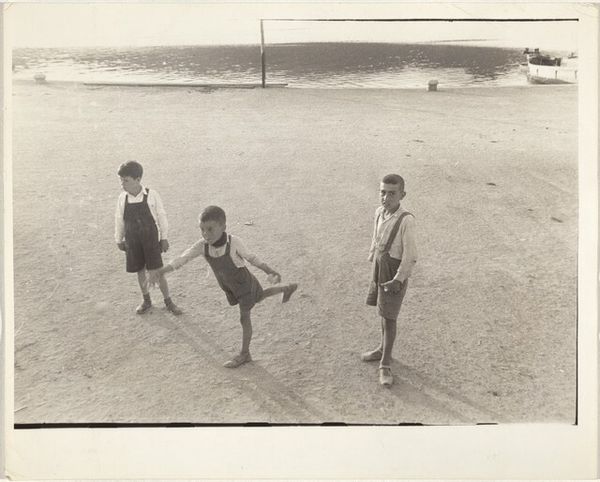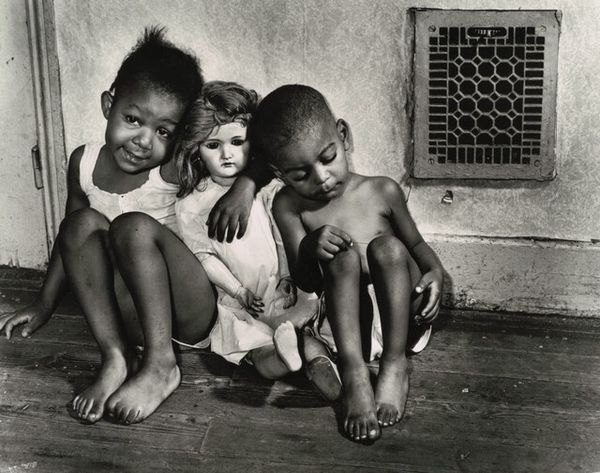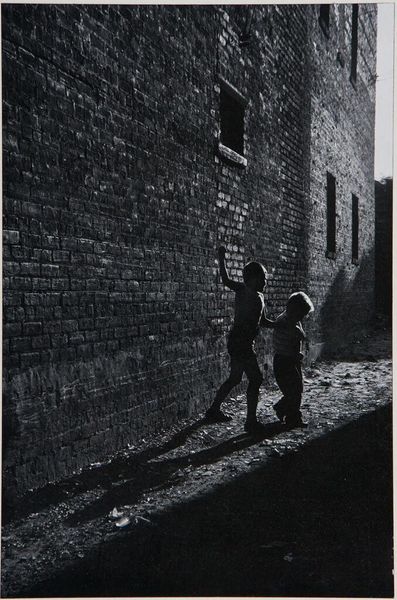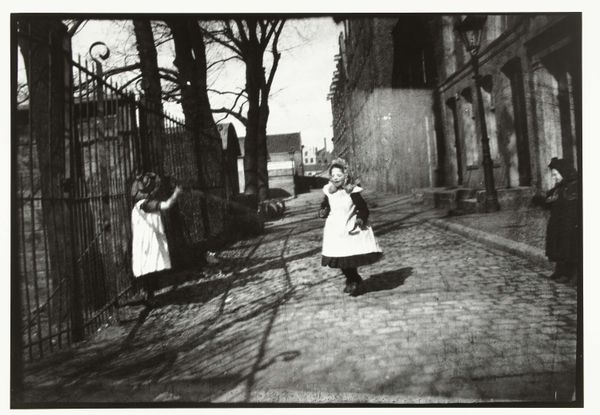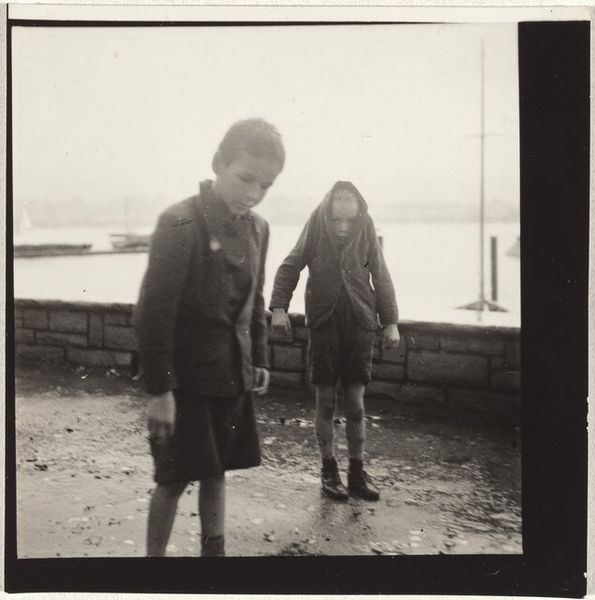
photography, gelatin-silver-print
#
black and white photography
#
landscape
#
outdoor photograph
#
figuration
#
street-photography
#
photography
#
gelatin-silver-print
#
monochrome photography
#
street photography
#
realism
Dimensions: image: 16.2 x 23.5 cm (6 3/8 x 9 1/4 in.) sheet: 27.7 x 35.5 cm (10 7/8 x 14 in.)
Copyright: National Gallery of Art: CC0 1.0
Curator: What strikes me immediately about this image, Helen Levitt's "New York," circa 1942, is the tension between spontaneity and the rigid urban environment. Editor: Absolutely. The starkness of the composition and the almost overwhelming greyscale palette make the image feel almost like an artifact itself. There’s a density, both literal in the stone wall, and in a feeling of constraint, that hangs heavy in the air. Curator: Levitt was known for wandering the streets of New York, documenting the everyday lives of its inhabitants with her Leica camera. The gelatin silver print process yields a sharpness that emphasizes texture and light, especially how the light seems to fade, or struggle to touch the sidewalk and those kids. The medium serves to capture a kind of truth of the moment. Editor: Considering this was created during wartime, that feeling of austerity probably mirrors the larger social consciousness and mood. The location, presumably a less affluent neighborhood given the simplicity of dress and bare feet, highlights the disparities of the time. We see that these kids make the best of the world in which they are trapped, using blowing bubbles, that simple, commercially available amusement. Curator: Exactly! Note the textures -- the rough stone wall versus the smooth sidewalk, the children’s worn clothing against the looming architecture. There’s a palpable sense of touch and use. Even the blown bubbles are present; they are remnants of the simple acts that occupied the group of children walking down the sidewalk. Editor: Levitt captured such fleeting moments. It really raises questions about art's role in documenting social history and giving voice to underserved communities. How do we ensure accessibility to these images that reflect the lived realities of diverse populations and prevent their erasure from the narrative? Curator: Yes, and looking at Levitt’s artistic labor and process—her engagement with photography—gives value to what is often overlooked in discussions about high art. Her street photography becomes a powerful social document through the skillful manipulation of materials and light. Editor: This image offers a lens through which to consider our current urban realities and historical narratives. Curator: Precisely. Levitt’s “New York” gives us much to consider.
Comments
No comments
Be the first to comment and join the conversation on the ultimate creative platform.
